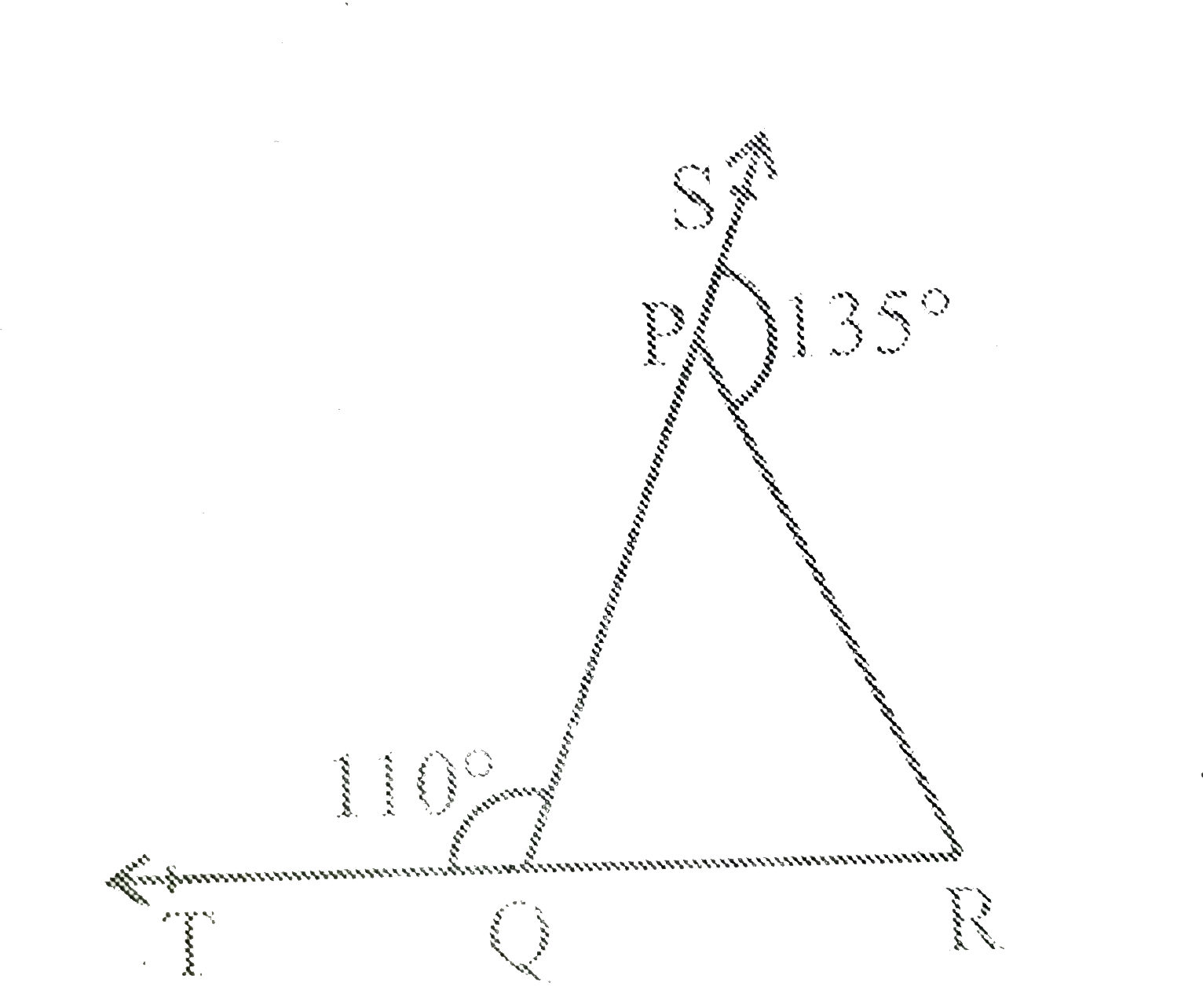sides QP and RQ of PQR are produced to point S and T respectively. If ∠SPR=1350 and ∠PQT=1100, find ∠PRQ.
To solve the problem step by step, we will follow the reasoning laid out in the video transcript.
Step 1: Draw the figure
We start by sketching triangle PQR with points S and T extending from sides QP and RQ respectively. Label the angles as given in the problem:
- Angle ∠SPR=135∘
- Angle ∠PQT=110∘
Step 2: Identify the angles
From the problem, we know:
- ∠PQT=110∘ (given)
- Since PQT is a straight line, we can find ∠PQR using the property that the sum of angles on a straight line is 180∘.
Step 3: Calculate ∠PQR
Using the straight line property:
∠PQR=180∘−∠PQT
Substituting the known value:
∠PQR=180∘−110∘=70∘
Step 4: Use the exterior angle theorem
Now, we apply the exterior angle theorem which states that the exterior angle (in this case ∠SPR) is equal to the sum of the two opposite interior angles:
∠SPR=∠PQR+∠PRQ
Substituting the known values:
135∘=70∘+∠PRQ
Step 5: Solve for ∠PRQ
Rearranging the equation to find ∠PRQ:
∠PRQ=135∘−70∘=65∘
Conclusion
Thus, the measure of angle ∠PRQ is 65∘.
Final Answer
∠PRQ=65∘
---
We start by sketching triangle PQR with points S and T extending from sides QP and RQ respectively. Label the angles as given in the problem:
- Angle ∠SPR=135∘
- Angle ∠PQT=110∘
From the problem, we know:
- ∠PQT=110∘ (given)
- Since PQT is a straight line, we can find ∠PQR using the property that the sum of angles on a straight line is 180∘.
Using the straight line property:
∠PQR=180∘−∠PQT
Substituting the known value:
∠PQR=180∘−110∘=70∘
Now, we apply the exterior angle theorem which states that the exterior angle (in this case ∠SPR) is equal to the sum of the two opposite interior angles:
∠SPR=∠PQR+∠PRQ
Substituting the known values:
135∘=70∘+∠PRQ
Rearranging the equation to find ∠PRQ:
∠PRQ=135∘−70∘=65∘
Thus, the measure of angle ∠PRQ is 65∘.
∠PRQ=65∘
Topper's Solved these Questions
Similar Questions
In Figure, side QP and RQ of PQR are produced to point S and T respectively. If ∠SPR=1350and ∠PQT=110∘, find ∠PRQ
View SolutionIn Fig. 6.39, sides QP and RQ of ΔPQR are produced to point S and T respectively. If ∠SPR=135∘ and ∠PQT=110∘, find ∠PRQ.

View SolutionIn Figure, TQ and TR are the bisectors of ∠Q and ∠R respectively. If ∠QPR=800and ∠PRT=300, determine ∠TQR and ∠QTR
View SolutionIn Fig. , the side QR of △ PQR is produced to a point S. If the bisectors of ∠PQR and ∠PRS meet at point T, then prove that ∠QTR=12∠QPR.

View SolutionIn Fig. 6.31, if PQ∣∣ST,∠PQR=110∘ and∠RST=130∘, find ∠QRS.

View SolutionIn figure, if lines PQ and RS intersect at a point T such that PRT=400,∠RPT=950 and ∠TSQ=750, find ∠SQT. Figure
View SolutionIn Fig. 6.44, the side QR of PQR is produced to a point S. If the bisectors of ∠PQR\ and∠PRS meet at point T, then prove that ∠QTR=12∠QPR .
View SolutionIn Figure, PQ>PR.QS and RS are the bisectors of ∠Q and ∠R respectively. Prove that SQ>SR.
View SolutionIf Figure, if QT⊥PR,∠TQR=400 AND ∠SPR=300, find x and y. Figure
View SolutionIn Figure, if lines PQ and RS intersect at a point T such that ∠PRT=40∘, ∠RPT=95∘and ∠TSQ=75∘, find ∠SQT.
View Solution
